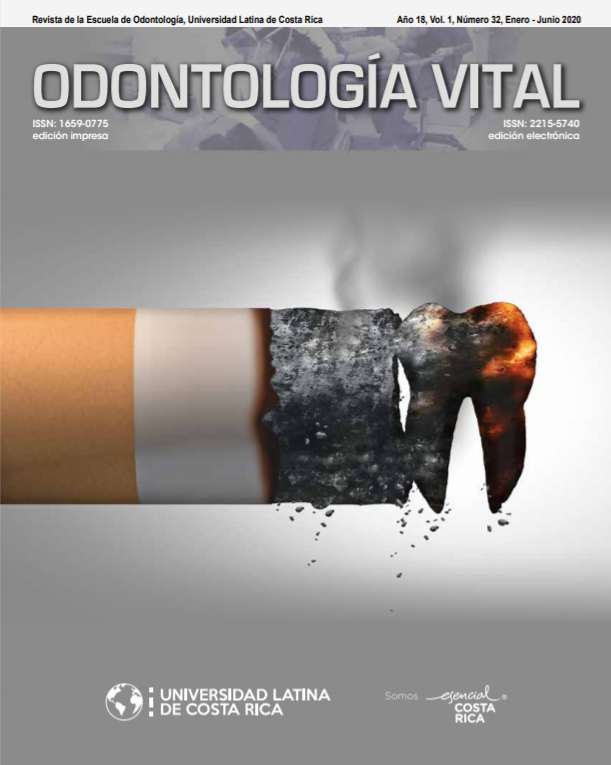Impact of dental fluorosis over the quality of life of ecuadorian teenagers between 11 and 14 years
DOI:
https://doi.org/10.59334/ROV.v1i32.376Keywords:
Teenagers, dental fluorosis, oral health, life quality, water fluoridation, epidemiology, dental health survey, public health dentistryAbstract
The purpose of this study was to determine the impact of dental fluorosis (DF) over the quality of life (QoL)
of adolescents between 11 and 14 years old, of Latacunga, Cotopaxi, Ecuador. Materials and methods: This
descriptive study had a sample of 128 adolescents between 11 to 14 years old and their respective parents. The
information was collected through, the INEN survey to determine socioeconomic status and the CPQ11-14
survey to determine adolescents’ QoL. In addition, intraoral photographic records were obtained for DF detection
according Thylstrup and Fejerskov index (TF) and the public water company accomplished chemical analysis
of fluoride concentration in water sources. Results: The prevalence of DF was 70.3% corresponding to TF 1, 2,
3 index. Chemical analyzes of water showed an average of 1.06 mg / l on Fluoride levels. Statistical analysis
showed correlation between QoL and Fluorosis presence (p = 0.000) and QoL to socio-economic level (p = 0.001). Conclusions: QoL relates to DF and the socio-economic level. However, it is not to age, sex or fluoride levels in
consumption water.
Downloads
Published
How to Cite
Issue
Section
License
Copyright (c) 2020 Odontología Vital

This work is licensed under a Creative Commons Attribution 4.0 International License.
Authors who publish with Odontología Vital agree to the following terms:
- Authors retain the copyright and grant Universidad Latina de Costa Rica the right of first publication, with the work simultaneously licensed under a Creative Commons Attribution 4.0 International license (CC BY 4.0) that allows others to share the work with an acknowledgement of the work's authorship and initial publication in this journal.
- Authors are able to enter into separate, additional contractual arrangements for the non-exclusive distribution of the Odontología Vital's published version of the work (e.g., post it to an institutional repository or publish it in a book), with an acknowledgement of its initial publication.
- Authors are permitted and encouraged to post their work online (e.g., in institutional repositories or on their website) prior to and during the submission process, as it can lead to productive exchanges, as well as earlier and greater citation of published work.
Métricas alternativas











